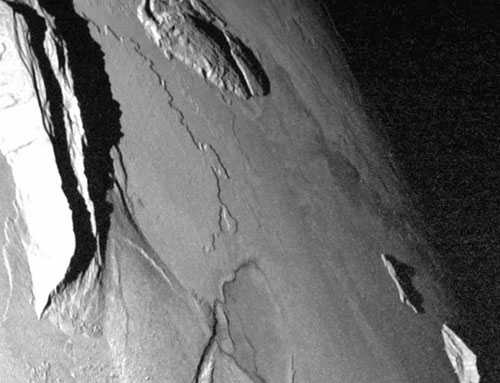|
from HoloScience Website
July 17, 2004
Mongibello Mons, on the far left of above image, is a sharp ridge rising so high it would rank among the highest mountains if it were on Earth. The existence of mountains like this poses a mystery for traditional astronomers. Io is the most volcanically active body in the solar system. This activity is supposed to be caused by tidal forces from Jupiter and its other large moons. In order to produce so many fast-changing and sometimes moving volcanoes, Io must be nearly molten. The temperatures in the active regions were higher than the spacecraft Galileoís thermal sensors could measure, far hotter than any volcano on Earth. Yet ridges like Mongibello Mons require a rigid crust to keep them from collapsing.
|
